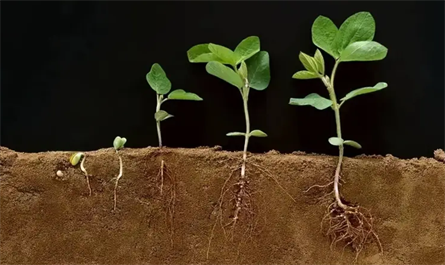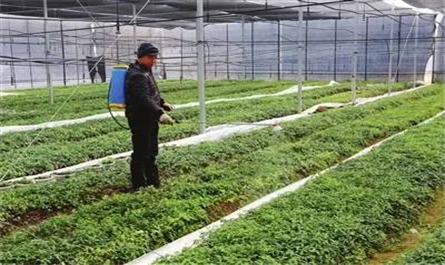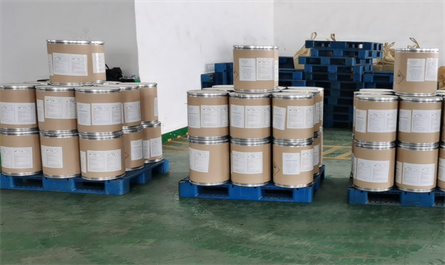How to use plant growth regulators scientifically and safely
Plant growth regulators refer to pesticides that regulate the growth and development of plants. They can promote or inhibit the growth and development of plants at low concentrations. Within the category of pesticides, plant growth regulators are one of the most specialized. The advantages of plant growth regulators such as "low dosage, significant effect, and high input-output ratio" make this type of pesticide an important production material for off-season facility vegetable cultivation. We hope that the majority of growers will use plant regulators scientifically and safely.

1. Each planting adjustment has its reasonable and appropriate application period.
The reasonable and appropriate pesticide application period is mainly determined based on the growth period of the crop. Every time a planting adjustment is applied to a certain crop, the crop growth period in the registration data must be accurately controlled. If the application period is improper, the effect will be poor, and there may even be Undesirable side effects. The appropriate period of use mainly depends on the growth and development stage of the plant and the purpose of application. For example, ethephon ripens tomatoes. The suitable application period is when most of the tomatoes turn white. After use, the color is good and uniform, and the quality is high. If applied too early, the ripening will be too fast, and the fruits will become stiff or even fall off. If applied too late, the fruit will become stiff or even fall off. It is difficult to store and transport. In short, the appropriate period of use of plant conditioners should be based on a certain growth period of the crop, not simply on a certain date.
2.Correct dosage of pesticides
Since plant growth regulators have the characteristics of high efficiency in trace amounts, their application effects are closely related to the concentration used. It should be noted that the appropriate concentration is relative and not fixed. Different concentrations should be used under different circumstances, such as different regions, crops, varieties, growing conditions, purposes, methods, etc. If the concentration is too low, it will not produce the desired effect; if the concentration is too high, it will destroy the normal physiological activities of the plant and even harm the plant, such as the expansion agent incident caused by excessive dosage. The concentration of growth regulators used on plants is far more complicated than that of general pesticides, and the dosage must be strictly controlled.

3.The influence of environmental factors on plant growth regulators.
Temperature, humidity, light, etc. will have a great impact on the application effect of plant growth regulators. For example, in the sun, the stomata of the leaves are open, which is conducive to the penetration and absorption of plant growth regulators. Therefore, plant growth regulators should be applied on sunny days and avoid cloudy and snowy weather. However, if the sun is too strong, the liquid will dry quickly on the leaf surface, so it is necessary to avoid spraying under the scorching sun at noon, except for off-season vegetable cultivation.
4.Strictly follow the registration information for use.
Different methods of use can also significantly affect the effect of plant growth regulators. The most commonly used methods are spraying and dipping. When spraying plant growth regulators, spray them on the action site. If you use ethephon to ripen fruits, try to spray them on the fruits. When using the dipping method to treat seedling cuttings and ripen fruits, the length of the treatment time is very important. For fruit ripening, it is generally soaked in the solution for a few seconds, taken out and dried, and piled to mature. Bare-root seedlings should soak their roots in a low-concentration auxin solution for 20 to 30 minutes. If you use the high-concentration auxin quick immersion method, just dip it in a 1-2 g/L solution for a few seconds, which is conducive to rooting and transplanting.

Although plant growth regulators are Pesticide Category, they work by "regulating and controlling" crop growth. Although they can regulate the growth state and growth process of crops, they can also promote crop yield and income and improve quality, and they can also improve the resistance of crops to external adverse environments such as diseases, insects, drought, heat, and drought, but they do not contain fertilizers (even regulators with concentrated foliar fertilizers have little fertilizer effect) and do not contain fungicides and insecticides.
Therefore, plant growth regulators cannot directly replace other normally used fertilizers and pesticides. They need to be closely coordinated with other fertilizers, water, medicines and conventional field comprehensive management to achieve the best use effect. For example, when people use plant growth regulators to promote flowering and fruiting or to preserve flowering and fruiting, if the water and fertilizer supply cannot keep up, not only will it be easy to see no effect, but it will also easily cause negative hazards such as premature aging and drug damage to crops.
Pinsoa plant growh regulators supply all kinds of PGR,aslo can customize recipes, welcome to communicate more
admin@agriplantgrowth.com

1. Each planting adjustment has its reasonable and appropriate application period.
The reasonable and appropriate pesticide application period is mainly determined based on the growth period of the crop. Every time a planting adjustment is applied to a certain crop, the crop growth period in the registration data must be accurately controlled. If the application period is improper, the effect will be poor, and there may even be Undesirable side effects. The appropriate period of use mainly depends on the growth and development stage of the plant and the purpose of application. For example, ethephon ripens tomatoes. The suitable application period is when most of the tomatoes turn white. After use, the color is good and uniform, and the quality is high. If applied too early, the ripening will be too fast, and the fruits will become stiff or even fall off. If applied too late, the fruit will become stiff or even fall off. It is difficult to store and transport. In short, the appropriate period of use of plant conditioners should be based on a certain growth period of the crop, not simply on a certain date.
2.Correct dosage of pesticides
Since plant growth regulators have the characteristics of high efficiency in trace amounts, their application effects are closely related to the concentration used. It should be noted that the appropriate concentration is relative and not fixed. Different concentrations should be used under different circumstances, such as different regions, crops, varieties, growing conditions, purposes, methods, etc. If the concentration is too low, it will not produce the desired effect; if the concentration is too high, it will destroy the normal physiological activities of the plant and even harm the plant, such as the expansion agent incident caused by excessive dosage. The concentration of growth regulators used on plants is far more complicated than that of general pesticides, and the dosage must be strictly controlled.

3.The influence of environmental factors on plant growth regulators.
Temperature, humidity, light, etc. will have a great impact on the application effect of plant growth regulators. For example, in the sun, the stomata of the leaves are open, which is conducive to the penetration and absorption of plant growth regulators. Therefore, plant growth regulators should be applied on sunny days and avoid cloudy and snowy weather. However, if the sun is too strong, the liquid will dry quickly on the leaf surface, so it is necessary to avoid spraying under the scorching sun at noon, except for off-season vegetable cultivation.
4.Strictly follow the registration information for use.
Different methods of use can also significantly affect the effect of plant growth regulators. The most commonly used methods are spraying and dipping. When spraying plant growth regulators, spray them on the action site. If you use ethephon to ripen fruits, try to spray them on the fruits. When using the dipping method to treat seedling cuttings and ripen fruits, the length of the treatment time is very important. For fruit ripening, it is generally soaked in the solution for a few seconds, taken out and dried, and piled to mature. Bare-root seedlings should soak their roots in a low-concentration auxin solution for 20 to 30 minutes. If you use the high-concentration auxin quick immersion method, just dip it in a 1-2 g/L solution for a few seconds, which is conducive to rooting and transplanting.

Although plant growth regulators are Pesticide Category, they work by "regulating and controlling" crop growth. Although they can regulate the growth state and growth process of crops, they can also promote crop yield and income and improve quality, and they can also improve the resistance of crops to external adverse environments such as diseases, insects, drought, heat, and drought, but they do not contain fertilizers (even regulators with concentrated foliar fertilizers have little fertilizer effect) and do not contain fungicides and insecticides.
Therefore, plant growth regulators cannot directly replace other normally used fertilizers and pesticides. They need to be closely coordinated with other fertilizers, water, medicines and conventional field comprehensive management to achieve the best use effect. For example, when people use plant growth regulators to promote flowering and fruiting or to preserve flowering and fruiting, if the water and fertilizer supply cannot keep up, not only will it be easy to see no effect, but it will also easily cause negative hazards such as premature aging and drug damage to crops.
Pinsoa plant growh regulators supply all kinds of PGR,aslo can customize recipes, welcome to communicate more
admin@agriplantgrowth.com
RECENT POSTS
-
Choosing the Right Plant Growth Regulators to Increase Yields and Income
-
What are the classifications of cytokinins?
-
Plant hormones and plant growth regulators protect the entire plant growth process in modern agricultural production
-
How to Use Ethephon to Promote Germination Growth and Flowering in Crops?
Featured News



